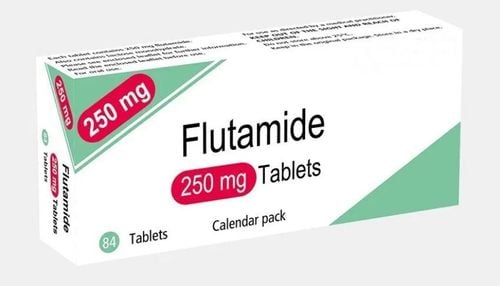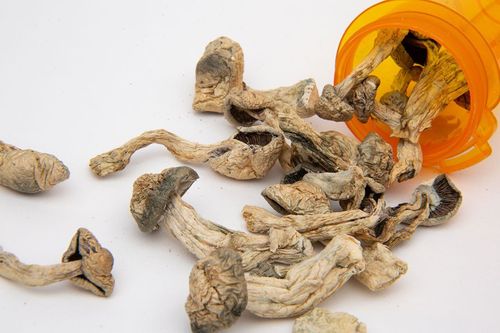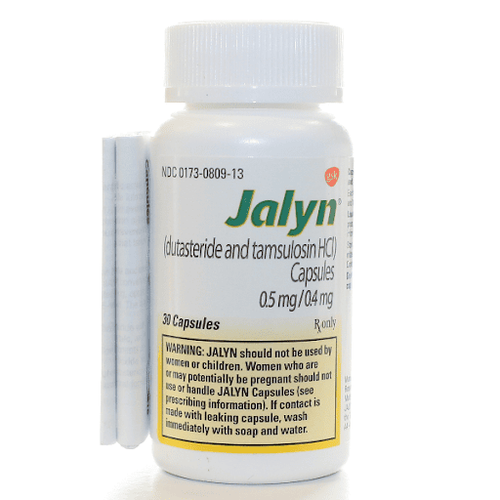This is an automatically translated article.
The main types of cancer that tend to metastasize to bone include multiple myeloma, breast cancer, prostate cancer, lung cancer, kidney cancer, and thyroid cancer. Bone metastases can be painful, can make bones more susceptible to fracture, and can raise blood calcium levels. So can drugs be used to treat metastatic bone cancer? How to use? The following article will provide readers with a reasonable use of drugs to treat bone metastases.
1. What is metastatic bone cancer?
Bone or bone tissue is hard tissue that has a different structure from other tissues in the body. Bones are the hard part of the body and come in many shapes with different roles, including supporting body structure, protecting vital organs, and allowing the body to move. In addition, the inside of the bone contains bone marrow and is responsible for creating blood cells and storing minerals, especially calcium.
Bone is the most common site in the body for cancer metastasis. When cancer cells spread to the bones (bone metastases), they can cause problems such as pain, fractures, or more serious events. Almost all cancers can metastasize to the bones. The spine is the most common site of bone metastasis. Other common sites are the hip bone (pelvis), upper shin bone (femur), upper arm bone (femur), ribs, and skull.
2. Diagnosis of bone metastases
Your doctor can detect if you have bone metastases through tests such as X-rays, CT scans, PET scans, and MRIs. These tests are not painful.
Some cancers are more likely to metastasize to the bone than others. These include:
Breast cancer Bladder cancer Kidney cancer Lung cancer Melanoma Prostate cancer Thyroid cancer When cancers spread, they can appear almost anywhere on the body . The most common sites for bone metastases are:
Hip bone (pelvic bone) Ribs and skull Backbone Upper leg bone (femur) Upper arm bone (humerus) Many people with cancer live longer years after I found out I had bone metastases. Bones are a common and treatable site for cancer to metastasize.
The point is that cancer can also start in the bone marrow. Cancer that started in the bone is different from cancer that has spread to the bone.
3. Signs and symptoms of bone metastases
Early detection and treatment of bone metastases can help prevent problems later on.
Pain
Bone pain is often the first symptom of cancer that has spread to the bone. At first, the pain will probably come and go. It tends to be worse at night and may be better with exercise. It may then become intermittent and may get worse during operation. Bones can be so weak that they break. This can often be prevented if bone metastases are detected early.
Fractures (fractures or breaks)
Fractures can occur with a fall or injury, but weak bones can also break during normal activities. These breaks often cause sudden, intense pain. Fractures most commonly occur in the long bones of the arms and legs and the bones of the spine. For example, sudden pain in the middle of the back could mean that a bone in the spine has broken.
Compressed spinal cord
Cancer growing in the bones of the back can press on the spinal cord. One of the earliest symptoms of spinal cord compression is back or neck pain.
If spinal cord compression is not treated immediately, the person may become paralyzed. This usually affects the legs (making it impossible to walk) but if the tumor presses on the spinal cord in the neck, the arms and legs can be affected.
Spinal cord compression can manifest in different ways:
Back pain (sometimes in one or both legs) Numbness in the legs or abdomen Leg weakness or difficulty moving the legs Loss of urine or stool control (no control) or problems urinating High blood calcium levels
When cancer spreads to the bones, too much calcium from the bones can be released into the bloodstream. This is also known as hypercalcemia.
High blood calcium levels can cause problems such as:
Constipation Frequent urination Feeling lethargic or drowsy Always feeling thirsty and drinking lots of fluids Muscle weakness Muscle and joint pain Confusion Kissing Renal failure.
4. Using drugs to treat bone metastatic cancer
The drugs used most often to treat bone problems in people with bone metastases are the bisphosphonate pamidronate (Aredia) and zoledronic acid (Zometa) and the drug denosumab (Xgeva). These drugs are given intravenously (IV or into a vein) or subcutaneously (under the skin). Most patients are treated once a month at first, but may be treated less often later if the condition is good. Treatment with one of these drugs can help prevent bone damage and bone-related complications such as fractures, hypercalcemia, and spinal cord compression.
In recent studies looking at bone modifiers for lung cancer it appears that these drugs can improve both progression-free and overall survival.
4.1. Bisphosphonates (Zometa) Bisphosphonates were first used to treat osteoporosis and were later recognized as an adjunct in the treatment of bone metastases. When used for cancers that have spread to the bones, they can do double duty. They can not only treat bone loss, but also have anti-cancer effects. They work by stopping bone breakdown to improve bone density.
The most commonly used bisphosphonates for bone metastases include:
Zometa (zoledronic acid): Zometa is an intravenous drug used for cases of bone metastases caused by various cancers. Aredia (pamidronate): Aredia is an intravenous bisphosphonate. It is also approved for breast cancer and multiple myeloma. The most common side effect of Zometa and Aredia was a mild flu-like syndrome during the first few days after the infusion. Other less common side effects of intravenous bisphosphonates may include kidney damage, low calcium levels, muscle, joint and/or bone pain (which can arise any time after treatment), Abnormal fractures and atrial fibrillation. Bisphosphonates may not be recommended for people with kidney disease.
4.2. Denosumab (Xgeva and Prolia) Xgeva and Prolia (denosumab) is a monoclonal antibody (man-made antibody) that can reduce complications (such as fractures) associated with bone metastases. They are also injected every four weeks.
Denosumab works by binding to and inactivating a receptor on a protein (RANKL) that regulates bone remodeling. There are two main types of cells in bone: osteoblasts that develop bone and osteoclasts that break down bone. Denosumab inhibits osteoclasts and increases bone density.
The side effects of denosumab are similar to those of bisphosphonates but these drugs are more likely to lead to low calcium levels with long-term use. For this reason, calcium and vitamin D supplements are often recommended. Unlike bisphosphonates, denosumab can be used by people with impaired kidney function. As with bisphosphonates, there is a small risk of osteonecrosis of the jaw with these drugs.
The following drugs are recommended for treatment in women, including:
Xgeva or Prolia 120mg administered subcutaneously every 4 weeks Aredia 90 mg IV every 3 to 4 weeks Zometa 4 mg IV every 12 weeks or 3-4 Once a week For prostate cancer the 2017 clinical practice guidelines also recommend that bone modifiers be initiated at the time of diagnosis of bone metastases. Options include:
Xgeva/Prolia (denosumab) 120mg subcutaneously every 4 weeks Zometa 4 mg IV every 12 weeks or every 3 - 4 weeks All other solid tumors with bone metastases may also are treated with one of the following:
Zometa 4 mg IV every 3 - 4 weeks Denosumab 120mg administered subcutaneously every 4 weeks In addition to reducing the risk of fractures, these drugs can help correct bone loss bone from hormone therapy used for breast and prostate cancer. Both bisphosphonates and IV denosumab appear to have significant antineoplastic activity, increasing benefits for people who choose to use these drugs. In fact, in addition to those with metastatic breast cancer, Zometa is now recommended for early-stage breast cancer as an adjuvant therapy to help reduce the risk of breast cancer metastasizing to bone in the first place.
5. The right lifestyle to help you manage bone metastases
Don't smoke: smoking makes bone loss happen faster. Limit alcohol to once per day (for women) and or two drinks (for men). Alcohol affects the cells that make new bone. In addition, drinking alcohol increases your risk of falling. Eat a diet rich in calcium and vitamin D. Strengthen your bones with medication, supplements and exercise. Take steps to reduce your risk of falls and fractures. Eat for healthy bones Try to get your daily recommended amount of calcium and vitamin D from the foods you eat. Good sources of calcium include:
Low-fat dairy products, like yogurt Kale and other dark leafy greens Broccoli Canned salmon or sardines with bones Calcium-fortified foods and drinks (orange juice is often fortified with calcium and vitamin D) Talk to your doctor about which calcium and vitamin D supplements are right for you each day. Here is a daily recommended table of calcium and vitamin D supplements for your reference:
| Khuyến nghị hàng ngày | Calcium | Vitamin D |
|---|---|---|
| Phụ nữ từ 19 đến 50 tuổi | 1.000 mg/ ngày | 600 IU |
| Nam giới tuổi từ 19 đến 70 | 1.000 mg/ ngày | 600 IU |
| Phụ nữ từ 51 đến 70 tuổi | 1.200 mg/ ngày | 600 IU |
| Phụ nữ và nam giới trên 70 | 1.200 mg/ ngày | 800 IU |
Exercise for healthy bones
Exercise is an important part of a healthy lifestyle that helps maintain bone density. Exercise also improves balance, making you less likely to fall. Thus, this reduces the risk of fractures. Talk to your doctor about what types of exercise are right for you or what you might need to change. For example, depending on the location of your bone metastases, there may be a limit to how much weight you should lift.
Please dial HOTLINE for more information or register for an appointment HERE. Download MyVinmec app to make appointments faster and to manage your bookings easily.
References: cancersupportcommunity.or, cancer.org, verywellhealth.com













